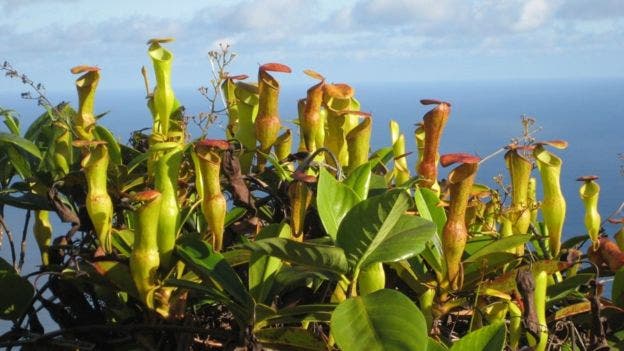Removing invasive plants and restoring native ones does a great deal to help pollination, a new study finds.

Invasive species are plants, animals, or pathogens that are non-native (or alien) to the ecosystem and which have the potential to cause harm to said ecosystem. It’s not uncommon for humans to bring invasive species along with them (or facilitate their entrance into the scene), which in time does incalculable damage to the biodiversity. The loss of biodiversity, in turn, has the potential to disrupt ecosystems and amplify the damage, with pollinators being especially vulnerable. The new study found that removing invasive species and bringing back natives makes a big difference.
The study was set in the Seychelles, where native and alien species are often grown side by side. Four islands in the archipelago had about 40,000 invasive woody plants removed, while the others were unchanged, serving as a control. Over an eight-month period, they observed what happened to pollinators — and lots of good things happened.
“Ecosystem restoration resulted in a marked increase in pollinator species, visits to flowers and interaction diversity,” said a team led by Christopher Kaiser-Bunbury of TU Darmstadt in Germany.
Al pollinator species (bees, wasps, flies, butterflies, moths, beetles, birds, and lizards) rejoiced at the changes. They started expanding their range, appearing at higher elevations and, of course, doing more pollination. This, in turn, was visible when the plants started bearing more fruit
Whether or not the environmental damage caused by invasive species can be reversed is an important topic. Of course, the Seychelles are not representative for many habitats in the world, but the results are pretty encouraging.
“Our results show that vegetation restoration can improve pollination, suggesting that the degradation of ecosystem functions is at least partially reversible,” Kaiser-Bunbury added.
The degree of recovery may depend on the state of degradation before restoration intervention and the proximity to pollinator source populations in the surrounding landscape, the study concludes.
Journal Reference: Christopher N. Kaiser-Bunbury, James Mougal, Andrew E. Whittington, Terence Valentin, Ronny Gabriel, Jens M. Olesen & Nico Blüthgen — Ecosystem restoration strengthens pollination network resilience and function. Nature (2017) doi:10.1038/nature21071


